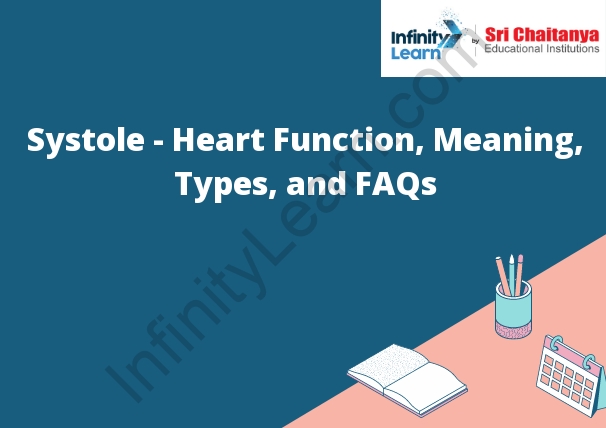Table of Contents
What is Systole?
The systole is the contraction of the heart muscle, which ejects blood from the ventricles and propels it through the arteries. The systole is the “pumping” action of the heart.

Systole Definition and its Types
The systolic pressure is the maximum blood pressure that is generated when the heart contracts. The systolic pressure is determined by the amount of blood that is ejected from the heart with each contraction and the diameter of the arteries. The systolic pressure is usually measured in millimeters of mercury (mm Hg) and is represented by the letter S in the blood pressure reading.
Function of Systole in Heart
The cardiac cycle is the sequence of events that occur as the heart beats. The cardiac cycle begins with the depolarization of the sinoatrial node, which causes the heart muscle to contract. This is followed by the relaxation of the heart muscle, which allows the heart to fill with blood. The cardiac cycle then repeats.
One of the most important phases of the cardiac cycle is systole, which is the phase of contraction. Systole occurs when the heart muscle contracts, which forces the blood out of the heart and into the arteries. The diastole phase occurs when the heart muscle relaxes, which allows the heart to fill with blood.
The function of systole is to pump blood throughout the body. Systole is responsible for delivering oxygen and nutrients to the tissues and removing waste products. Systole is also responsible for maintaining blood pressure and cardiac output.
Mechanism of Systole and Diastole
In cardiac physiology, systole is the contraction of the heart muscle that forces blood out of the heart into the arteries. The word systole comes from the Greek word συστολή meaning “contraction”.
In contrast, diastole is the relaxation of the heart muscle that allows blood to refill the heart. The word diastole comes from the Greek word διαστολή meaning “relaxation”.
Clinical Importance of Systole and Diastole
The heart is a muscle that pumps blood throughout the body. The heart has four chambers: two atria and two ventricles. The atria are the upper chambers and the ventricles are the lower chambers. The right side of the heart pumps blood to the lungs and the left side of the heart pumps blood to the rest of the body.
The heart beats because of an electrical signal that starts in the right atrium. This signal causes the atria to contract and push blood into the ventricles. The ventricles then contract and push the blood out of the heart. The electrical signal that causes the heart to beat starts in the sinoatrial (SA) node, which is located in the right atrium.
The signal travels down the atria and causes them to contract. The signal then travels to the atrioventricular (AV) node, which is located in the wall between the atria and the ventricles. The AV node slows the signal down before it travels to the ventricles. This gives the ventricles time to fill with blood.
The signal then travels from the AV node to the ventricles. This causes the ventricles to contract and push the blood out of the heart. The signal then travels down the bundle of His and spreads out to the left and right ventricles. This causes the ventricles to contract and push the blood out of
Explain in detail :
The heart is a muscular organ that pumps blood throughout the body. The heart has four chambers: two upper chambers called atria and two lower chambers called ventricles. The right side of the heart pumps blood to the lungs to pick up oxygen. The left side of the heart pumps the oxygen-rich blood to the rest of the body.
The heart rhythm is controlled by special cells in the heart called pacemakers. The pacemaker cells create an electrical current that causes the heart muscle to contract and pump blood.
The heart contracts and relaxes in a regular rhythm. The contraction is called systole and the relaxation is called diastole. The systole and diastole of the heart are illustrated in the following figure.
During systole, the atria contract and pump blood into the ventricles. The ventricles then contract and pump blood out of the heart. The following figure shows the electrical current that causes the heart muscle to contract.
The pacemaker cells create an electrical current that causes the heart muscle to contract. This current spreads through the heart muscle and causes it to contract.







